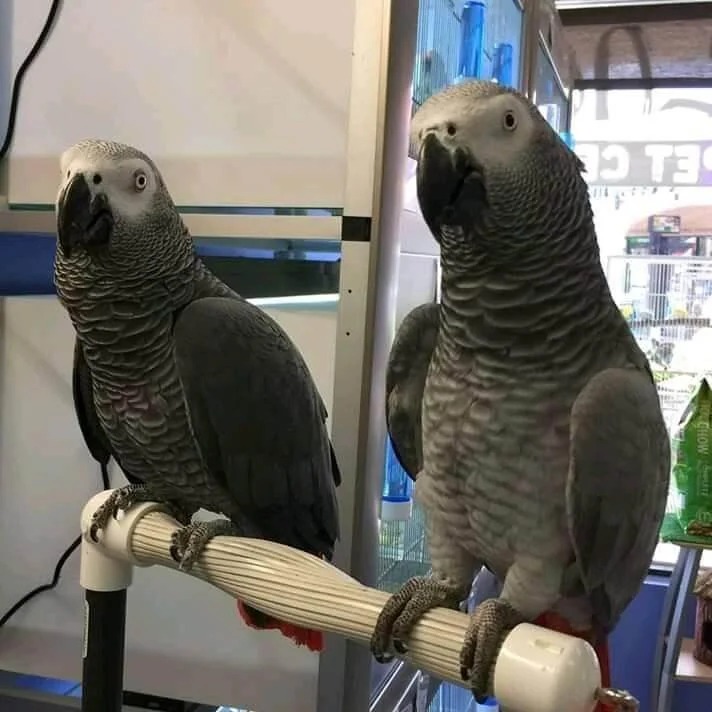
Gizmo: A Newborn African Grey Parrot
The African Grey Parrot, renowned for its cognitive capabilities and conversational skills, is a preferred buddy for bird enthusiasts and beginners alike. One specific person just recently grabbing attention is Gizmo, a newborn African Grey Parrot. In this article, we will explore the special characteristics of Gizmo, delve into the care needed for young African Grey Parrots, and answer common concerns surrounding these remarkable birds.
An Overview of the African Grey Parrot
African Grey Parrots belong to the Psittacidae family and are belonging to the jungles of West and Central Africa. They are commemorated for their striking gray plumes, red tail feathers, and exceptional intelligence. Typically, adult African Greys weigh between 400 to 600 grams and can live for over 50 years in captivity. They can establish strong bonds with their human caregivers and are understood for their ability to imitate sounds and human speech.
Qualities of Gizmo
As a newborn African Grey Parrot, Gizmo exhibits particular qualities and behaviors typical of juvenile parrots. Here are some essential characteristics of Gizmo:
- Appearance: Newborn African Greys are covered in fine, downy feathers. As they grow, they start to develop their adult plumage, which includes a consistent gray color with a distinct red-tail.
- Habits: Young congo african grey parrot Grey Parrots wonder and exploratory. Gizmo will be inclined to participate in play and will display baby african grey parrot for sale-like behaviors such as vocalizations and attempts to climb up or explore their environments.
- Developmental Stages: In the very first few weeks of life, Gizmo will rely heavily on its parents or caretakers for food, heat, and social interaction.
Caring for a Newborn African Grey Parrot
Owning a newborn African Grey like Gizmo can be a gratifying experience, but it needs a solid understanding of their requirements. Below is a comprehensive guide to taking care of a newborn African Grey Parrot.
Nutritional Needs
Proper nutrition is important for the development and advancement of Gizmo newborn african Grey Parrot. Here are the standard dietary requirements:
- Hand-Feeding Formula: For extremely young parrots, hand-feeding solutions are important. These can be bought at animal shops and need to be prepared according to the maker's instructions.
- Fresh Fruits and Vegetables: As Gizmo develops, present a range of fresh, organic fruits and vegetables. Favorites include apples, carrots, and leafy greens.
- Pellets: High-quality pelleted diet plans are beneficial, as they provide required minerals and vitamins.
Environmental Requirements
Developing a safe and revitalizing environment for Gizmo is crucial for their physical and psychological well-being. Consider the following aspects:
- Cage Size: The cage needs to be large enough for Gizmo to move around freely, with appropriate perches and toys.
- Temperature level: Maintain a comfortable temperature, avoiding drafts and severe heat. African Greys thrive in temperature levels in between 70 ° F and 80 ° F (21 ° C-
- 27 ° C). Socializing: Gizmo needsroutine social interaction with humans and other possible buddies to promote a well-rounded personality.
Health Considerations
Keeping track of Gizmo's health is vital. Keep the following health considerations in mind:
- Regular Veterinary Visits: Schedule routine check-ups to guarantee Gizmo is establishing healthily. An avian veterinarian is recommended.
- Signs of Illness: Be conscious of signs such as sleepiness, changes in appetite, or abnormal droppings, and look for veterinary help if required.
- Grooming: Regularly check and take care of Gizmo's beak, nails, and plumes.
Possible Challenges of Raising a Newborn African Grey Parrot
Bringing Gizmo into your home is exciting, yet it features possible obstacles. Here are some typical issues dealt with by new owners:
- Noise Levels: African Greys can be vocal; therefore, it's important to make sure that Gizmo's vocalizations do not end up being a nuisance.
- Behavioral Issues: If not socialized properly, Gizmo newborn african grey parrot may establish behavioral issues like feather plucking or biting.
- Time Commitment: Raising a newborn needs significant time and effort to satisfy their psychological and physical requirements.
Advantages of Owning an African Grey Parrot
Despite the challenges, owning an African Grey like Gizmo has many advantages:
- Intelligence: African Greys are amongst the most smart birds, finding out tricks and words quickly.
- Friendship: They form deep attachments to their owners, providing companionship and affection.
- Entertainment: Their spirited nature and ability to simulate sounds can supply unlimited entertainment.
FAQs About Gizmo and African Grey Parrots
For how long does it take for a newborn African Grey to be fully weaned?
Usually, African Grey Parrots can take anywhere from 8 to 12 weeks to be completely weaned, depending on the private bird's growth and development.
What should I do if Gizmo is not eating?
If Gizmo reveals indications of not eating, it's important to talk to a bird veterinarian instantly. Ensure that the hand-feeding formula is ready correctly, and think about using a range of soft foods.
Can African Grey Parrots discover to talk?
Yes, African Grey Parrots are renowned for their talking ability. They can find out a large range of words and expressions, particularly if exposed to them regularly from a young age.

What is the lifespan of an African Grey Parrot?
African Grey Parrots have a lifespan of approximately 50 to 60 years, making them a long-term dedication for any owner.
Raising Gizmo, a newborn African Grey Parrot, presents an incredible opportunity to link with among nature's most smart and appealing animals. Comprehending their requirements, producing a suitable environment, and using appropriate dietary care are necessary for nurturing a healthy and happy parrot. By understanding the potential challenges and advantages, future parrot caretakers can make informed decisions and delight in the satisfying experience of owning an African Grey.